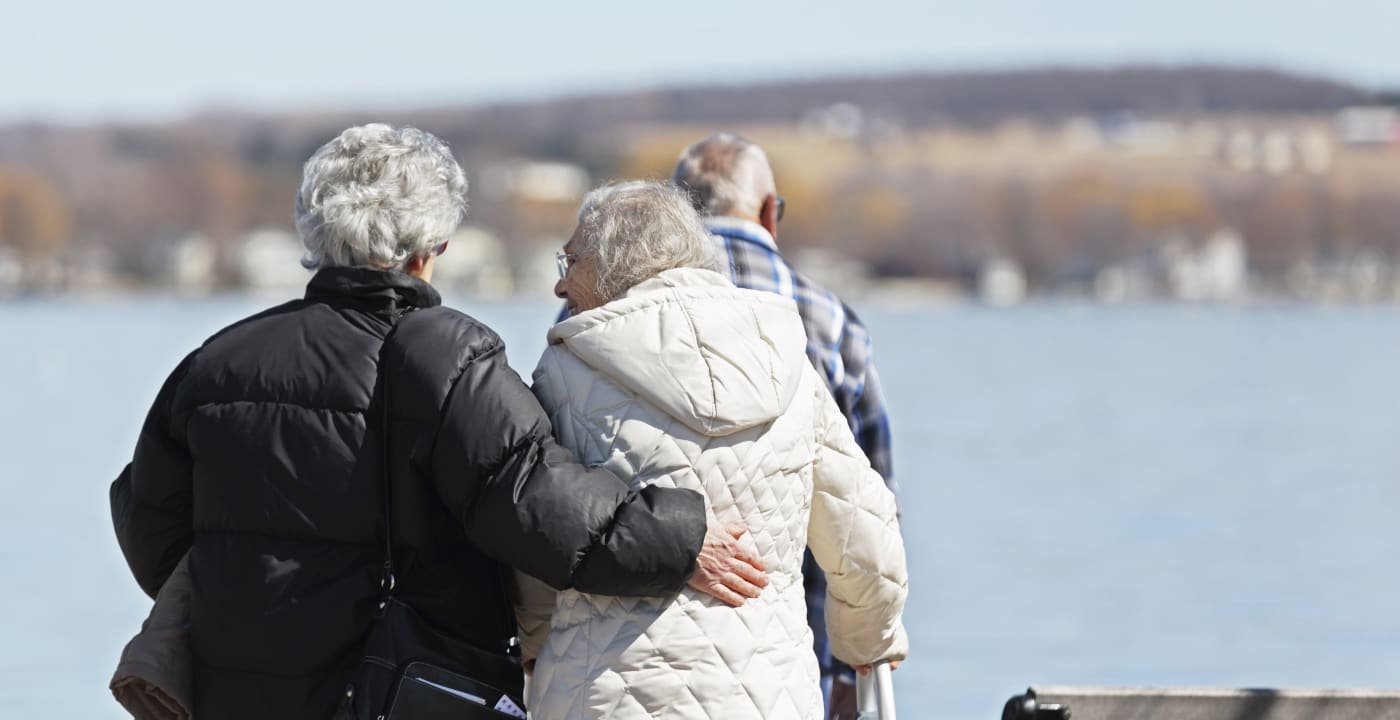Mental health matters at all ages

At a glance
- People 85 and older have highest suicide rate of any age group
- Isolation, loss of hobbies and relying on others may lead to frustration and sadness
- Warning signs include talking about dying or being a burden, withdrawing or mood swings
Aging is one of the few things in life no one can avoid.
We can, however, control how we age.
“With each decade, I ask my patients how they want the next decade to look,” says Tara Tschampel, NP, MultiCare Tacoma Central Internal Medicine. “You have a choice, and your mental health is part of that.”
There are things you can do each day to improve not only physical health, but also emotional well-being, says Tschampel, who specializes in geriatric primary care. Addressing all aspects of your health is especially important during the big transitions that come with aging, she adds.
Whether preparing for your own future or supporting aging family members, here’s what you should plan for and talk about to ensure not just a healthy life, but a happy one.
Life looks different as we age
As we age, we’re likely to spend more time at the doctor, take more medications and need more assistance with daily tasks.
Some people may not want to spend their time caring for themselves. But when you’ve been told it’s necessary and you’re dependent on others, it’s easy to fall into the routine set for you.
“As a society, people are afraid to talk about dying. It may be something we talk about with friends but avoid with family, but it’s an important conversation for anyone to have.”
Many older adults are also likely to spend more time alone as others around them age or they’re unable to travel solo. Even those who have moved into assisted living facilities with group events and activities may not feel inclined to participate.
Others may find their inability to do things they used to enjoy — such as working, running or reading — to be frustrating and saddening.
Big life changes can impact our physical and emotional well-being at any age, but the impact is especially hard as we age and feel less able to make a change for ourselves.
The warning signs of depression and suicidal thoughts
When we can’t adequately cope with or respond to life changes, our quality of life can decline. People 85 and older have the highest suicide rate of any age group, according to the National Council on Aging.
In 2021, suicide rates for this age group were reported at 22.4 per 100,000 people, according to the Centers for Disease Control and Prevention. These numbers are believed to be underreported — up to as much as 40 percent — due to “silent suicides,” such as overdoses, self-imposed starvation and dehydration. Men in this age group are at a heightened risk, Tschampel adds.
“As we get older, we all think about dying, but is that suicidal or is it just a natural part of aging?” she says. “To wonder ‘When is it my time?’ is normal. But some of it’s not, like actively saying you want to die.”
Doctors and other health care providers can screen for emotional well-being during appointments, but they’re only with patients a limited amount of time and often must rely on feedback from family or caregivers — especially if a patient isn’t one to talk about their emotions openly.
Some key indicators that an older adult may be depressed or considering suicide include:
- Talking about wanting to die or kill oneself
- Looking for a way to kill oneself
- Talking about being a burden to others (especially for those dependent on others for daily tasks or transportation)
- Increasing alcohol or drug use
- Anxiety or agitation
- Sleeping too much or too little
- Withdrawing or self-isolating
- Anger
- Extreme mood swings
- Suddenly giving away belongings
- Weight loss/gain not associated with health conditions
Many of these feelings worsened during the COVID-19 pandemic as routines changed and community events were shut down, Tschampel says. For some, those opportunities to get outside and engage never returned.
Even with these warning signs, family, caregivers and providers must also work against lifelong mental health stigmas often held by older adults.
There’s no shame in talking about mental health
“They didn’t grow up thinking it’s OK to feel that way. It was seen as a weakness,” Tschampel says. “I want to help them think through why they’re feeling the way they are. I don’t like to say, ‘You’re depressed or anxious,’ but rather, help them think through what’s going on and how that’s impacting them.”
Things like chronic pain, health conditions, cognitive changes or worsening cardiovascular health can become so frustrating or debilitating that they lead to a worsening of emotional well-being.
“Culturally in the United States, we don’t take care of our elders very well,” Tschampel says. “As a society, people are afraid to talk about dying. It may be something we talk about with friends but avoid with family, but it’s an important conversation for anyone to have.”
The conversation should be tailored to the individual and whether they’re open about their well-being, but sometimes the best approach is to simply ask, Tschampel says.
“Let people know you care about them and that you’re there for them,” she says. “And if they have anything they’re thinking about, you hope they would share it and talk with you.”
What's next
- Be in the know: New resource for those in mental health crisis
- Find age-appropriate support for sudden changes with mental and physical health
- Support hope, healing and recovery through the MultiCare Behavioral Health Foundation




